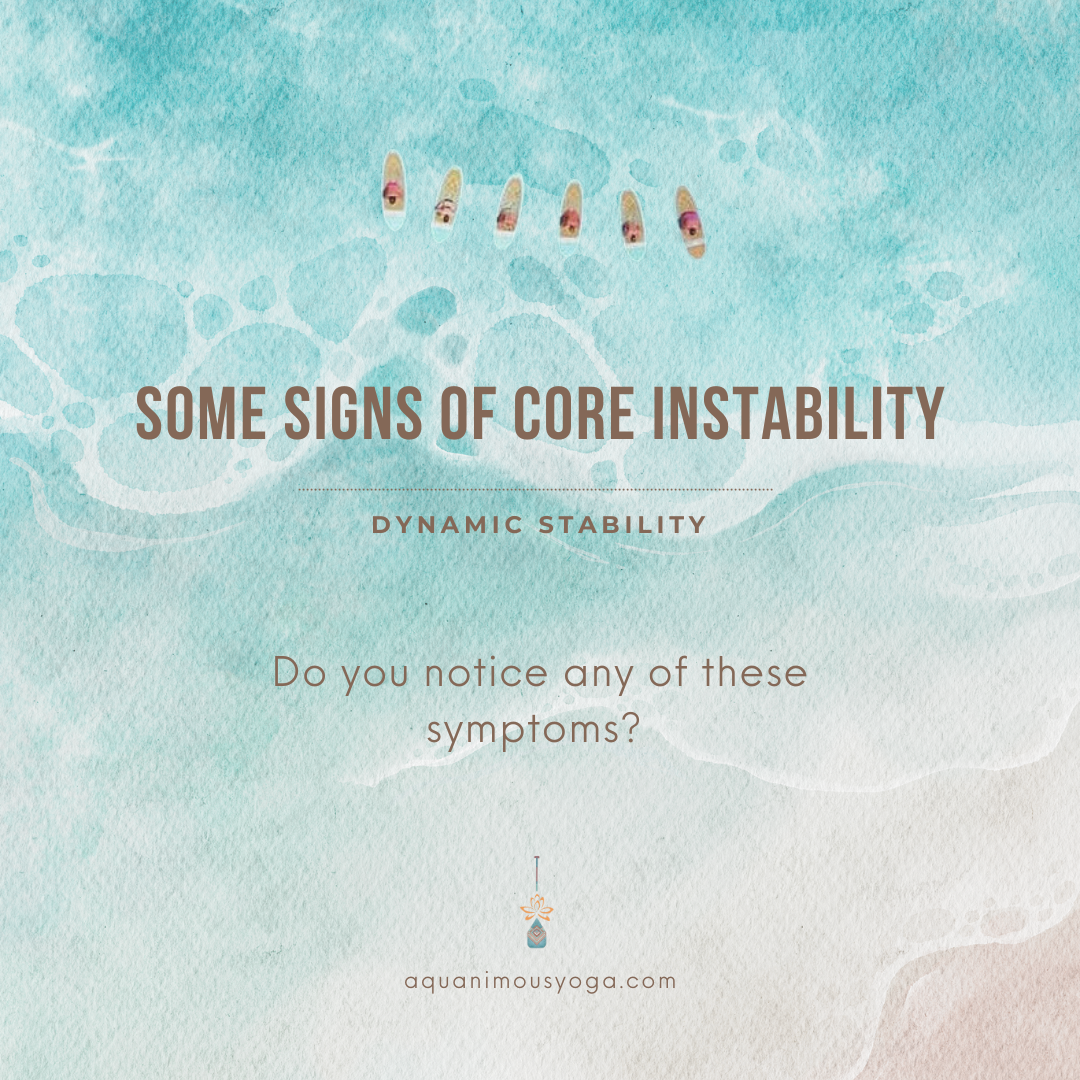
09 Dec Some Signs of Core Instability
Posted at 09:55h
in Aquanimous Yoga, Balance and Stability, Dynamic Stability, Embodied Core, Instability Training, Self-care, Somatics
0 Comments
Here are some of the signs that core instability is the culprit in contributing to spinal discomfort, pain, or movement restriction.
Do you notice any of these symptoms?
*Note: Other causative factors may contribute to all of these symptoms. If in doubt, consider seeing your healthcare practitioner to obtain proper diagnosis and treatment. In particular, pain that is not relieved by any change of position is a serious warning and should be cause to immediately see a medical professional.
- PAIN: You suffer from groin, lower or mid-back pain, sacroiliac discomfort, or sciatica.
- BRIDGING OF THE RIB CAGE: Your lower ribs poke forward when you bring your arms over your head.
- STANDING: You are able to bring your pelvis into a neutral position if you bend your knees, but as soon as you straighten the legs, the pelvis moves into an anterior tilt (hyperlordosis) or posterior tilt (hypolordosis). You have lost the ability to flex or extend the femur in the hip socket without altering the position of the pelvis.
- SITTING: You feel a painful ‘catch’ in your groin when standing up from prolonged sitting, particularly when your legs have been crossed. It may take you a while to ease up to a vertical position. You may have pain in your lower back when sitting or when transitioning from sitting to standing.
- LYING DOWN: While lying on your back you feel the need to keep your knees bent. Straightening your legs causes immediate tension and discomfort in the lower back or sacroiliac joint.
- BACK BENDING: When bending backward you feel compression or pain in your lower back, especially at the juncture where the lower back and sacrum meet, or at the juncture where the rib cage ends and the lower back begins. You may find it difficult to achieve full extension in your groins in back bends.
- ONE-SIDED LOWER BACK TENSION OR PAIN: You notice persistent tension or pain on one side of your lower or mid-back. This unilateral discomfort may increase with back bending.
- HIP FLEXION: When you bring the knee into the chest you feel pinching or pain in the groin.
- FORWARD BENDING: You initiate forward bending by ‘see-sawing’ at the base of the rib cage or the lumbosacral junction, rather than hinging at the hips. You may struggle to pause in a tabletop position or in a standing forward bend, or you may tend to ‘fall’ into standing forward bends rather than moving with a controlled descent.
- EXTERNAL ROTATION: Your knees and legs turn outward when you lie down in constructive rest position (CRP). When you try to maintain your thighs in a parallel position, the inner thigh muscles tire and may even begin to tremble. Sometimes the legs reflexively fall outward despite your best efforts.
- OTHER MUSCULOSKELETAL SYMPTOMS: Core instability can contribute to chronic hip flexion, disk protrusion, and apparent short leg, over-development of the quadriceps, restricted movement of the hip socket, and forward head posture.


No Comments